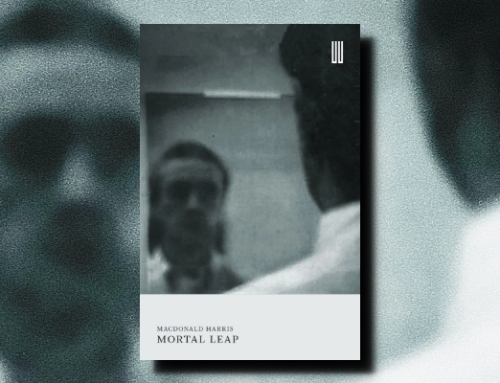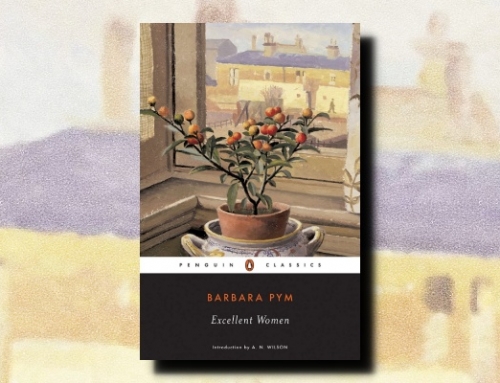Hamnet
Maggie O’Farrell (2020)
Knopf (2020)
286 pp
 As a fan of the mysterious life and exquisite works of William Shakespeare, I was very excited to read Maggie O’Farrell’s Hamnet, the name of Shakespeare’s son who died at eleven years old, possibly of the bubonic plague. Earlier this year O’Farrell’s novel was shortlisted for the Women’s Prize (I expected to see it on this year’s Booker Prize longlist, but it was not, alas). I read it earlier this year, as soon as I got my hands on a copy. I think it is very deserving of the accolades it’s received, even though for the first half or so I had my concerns, even saying on The Mookse and the Gripes Goodreads thread that felt like I was watching a play from across the street; I wasn’t sure I liked it. The last half, by contrast, had me by the throat. In the months since I read it I’ve gone back to reread portions and I’m in full support that it belongs in the conversation of the best of the year.
As a fan of the mysterious life and exquisite works of William Shakespeare, I was very excited to read Maggie O’Farrell’s Hamnet, the name of Shakespeare’s son who died at eleven years old, possibly of the bubonic plague. Earlier this year O’Farrell’s novel was shortlisted for the Women’s Prize (I expected to see it on this year’s Booker Prize longlist, but it was not, alas). I read it earlier this year, as soon as I got my hands on a copy. I think it is very deserving of the accolades it’s received, even though for the first half or so I had my concerns, even saying on The Mookse and the Gripes Goodreads thread that felt like I was watching a play from across the street; I wasn’t sure I liked it. The last half, by contrast, had me by the throat. In the months since I read it I’ve gone back to reread portions and I’m in full support that it belongs in the conversation of the best of the year.
The premise of Hamnet is interesting and the structure is set up in a way that makes the novel, in my estimation, innovative and important in its exploration of these characters. Shakespeare is such a towering figure that you’d expect any account about people in his life to, nevertheless, revolve around him. That’s not O’Farrell’s approach, though. Instead, we see this story play out mostly from the perspective of those who stayed in Stratford-upon-Avon while the poet was away making his legacy in London: Hamnet himself; Judith, his twin sister; and, most profoundly, Anne Hathaway, Shakespeare’s wife, called Agnes throughout this novel because some scholarship suggests that could very well may have been her name. Shakespeare makes appearances, but his orbit takes him far away, and he feels like a side character, and not always a welcome one; this is highlighted by O’Farrell’s choice to never name him but rather have the characters call him the husband or the poet or some such other general term. Due to this, Agnes, Hamnet, and Judith are central characters that are all the more real and immediate, and their lives are not used simply to serve as material for analyzing Shakespeare’s work. Indeed, if anything, they subvert his work.
As I said before, not everything here felt immediate. At the beginning in particular the style, for me, was a bit soporific. Here are some examples from early in the book:
His mother will be here. She will bring Judith back to health. She can drive away any illness, any malady. She will know what to do.
and
Hamnet’s legs fold under him. He sits down on the side of the pallet. He can hear the suck and draw of her breath. There is, for him, some comfort in this. He hooks his smallest finger into the corresponding one of hers. A single tear leaks from his eye and drops onto the sheet, then into the rushes beneath.
To me, at first, the rhythm felt like a slow and steady river on a sunny afternoon, but that didn’t mix well with a story about children pulled down by the plague. In the first section, because it recounts a child’s terror, I felt this style must be to suggest a bit of numbness as time slipped onward. If I break it apart, I can see similarities in tone and rhythm to the first few chapters of A Portrait of the Artist as a Young Man, which I love. So while it didn’t work as I went through it initially, I chalk up my inability to connect fully at first up to my mood at the time.
That really is the only complaint I had about this, though. Once I got my handle on the rhythm, I was able to fully enjoy this world, which is filled with wonderful detail, like the washing, the falconry, the apples, and — in a particularly powerful section — the plague. That section on the plague is uncanny in light of what we’re dealing with in the world today:
For the pestilence to reach Warwickshire, England, in the summer of 1596, two events need to occur in the lives of two separate people, and then these two people need to meet. The first is a glassmaker on the island of Murano in the principality of Venice; the second is a cabin boy on a merchant ship sailing for Alexandria on an unseasonably warm morning with an easterly wind.
Now, to the reason that this book fully won me over and has become one of my favorites of the year, which I cannot go into in great depth because I fear it would spoil the novel: this is one of the most powerful depictions of grief, disconnection, and disillusionment I’ve read. It all leads up to the final, brilliant scene. Amazingly, as I mentioned above, rather than use these characters to explain Shakespeare’s work O’Farrell succeeds in using Shakespeare’s work to subvert itself and his own myth; it is used to bring new life and light to Agnes and her children. It’s fantastic and beautifully accomplished.









Unlike you, I was grabbed immediately by this one — I wonder if I was primed for it by having read and really liked others of her books. But we ended up in the same place! I agree that it is a brilliant strategy to sideline Shakespeare (I loved that he was never named). He’s still a strong character, but even the sense of his becoming the Bard is muted. That section on how the infection travels to them is so powerful and also, under the circumstances, so chilling!
I have wondered if this is O’Farrell’s normal style (this was the first time I’ve read a book by her). And you are correct that Shakespeare is still a strong character, but I do like that O’Farrell seems to have the prose itself pushing against him a bit. I’m not sure how to articulate this well, but I thought it was fantastic for the story she was telling!